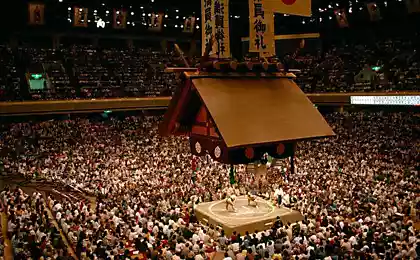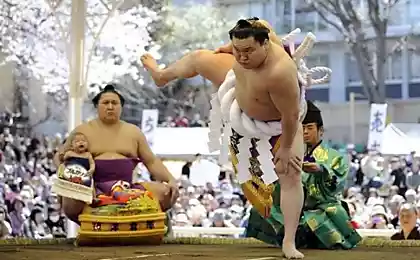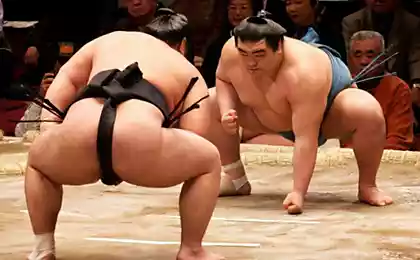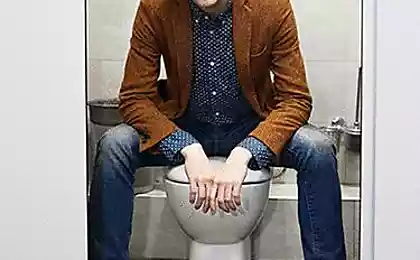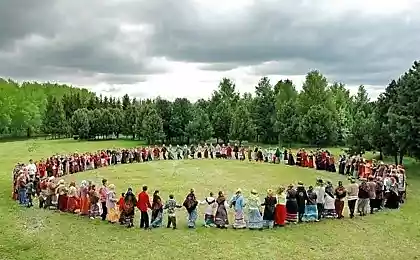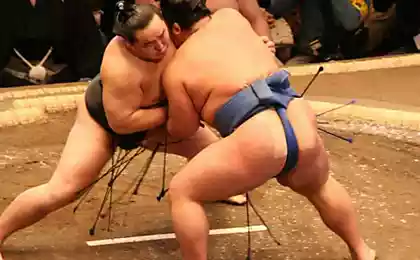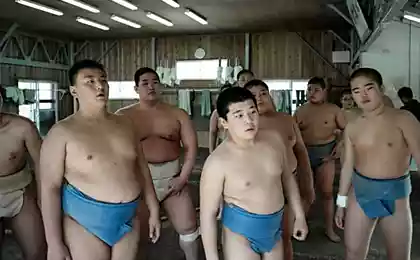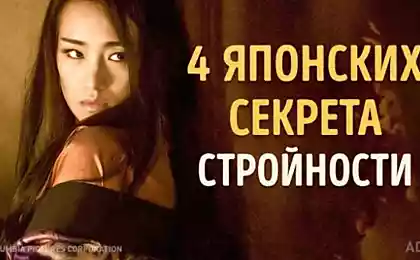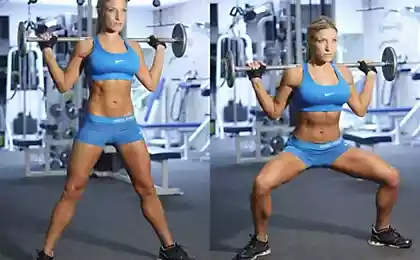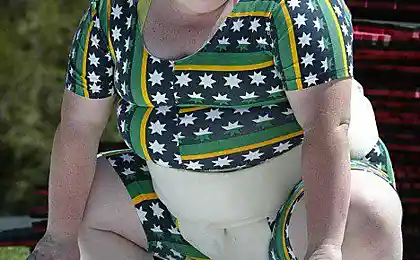1326
Sumo - a whole culture
Sumo - the traditional Japanese sport, which includes elements of the noble arts, shows, temple rites, sports, samurai spirit and the circus business. In Tokyo, the annual sumo association arranges one-day demonstration tournament in which the wrestlers demonstrate their skills, and the audience nasladzhayutsya spectacle.


Sumo wrestlers go to Yasukuni Shrine in Tokyo during the opening ceremony of the annual sumo tournament in Tokyo on April 9th. (Reuters Pictures)
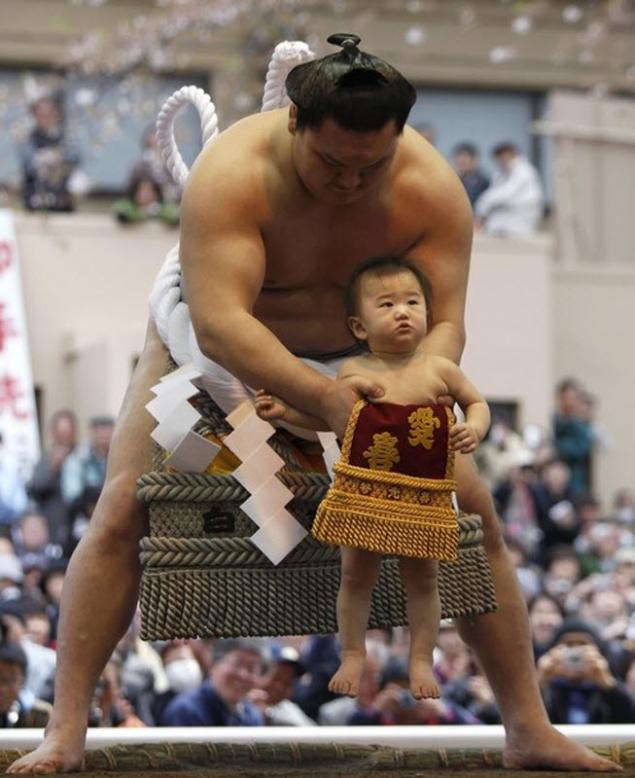
Grand Champion sumo "yokozuna" Hakuho holds the son of a sumo wrestler Kotomitsuki called Aiki. (Reuters Pictures)
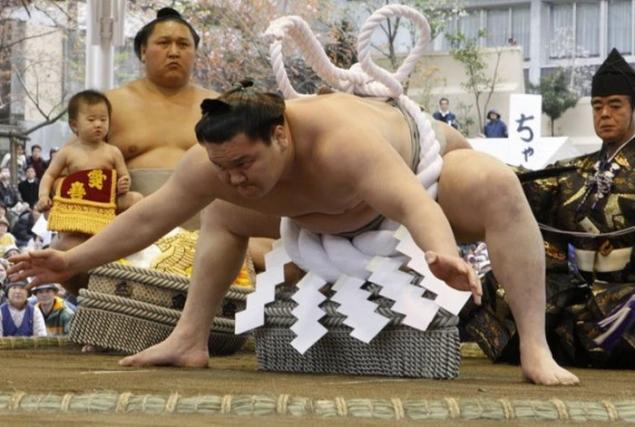
In the two top division wrestlers have special belt kesё-mawashi, which is used only in rituals. (Reuters Pictures)
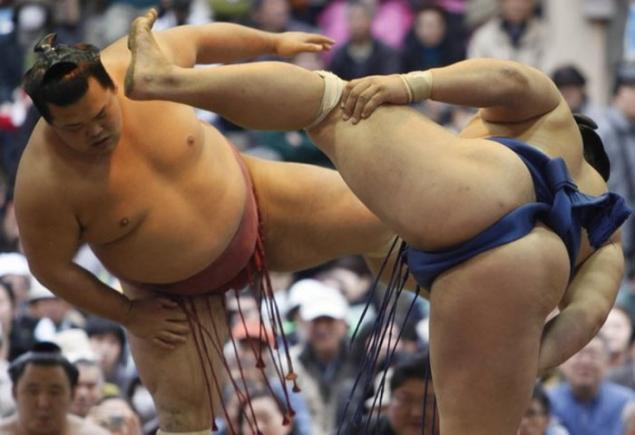
In sumo it is forbidden to beat, but to the open palm, as well as the eyes and genital area. It is forbidden to grab the hair, ears, fingers and genitals closing of the mawashi. They should not be chokehold. Everything else is allowed, so the arsenal of fighters included slaps, pushes, grabs permitted for any part of the body and especially the belts and rolls, various steps and sweeps. (Reuters Pictures)
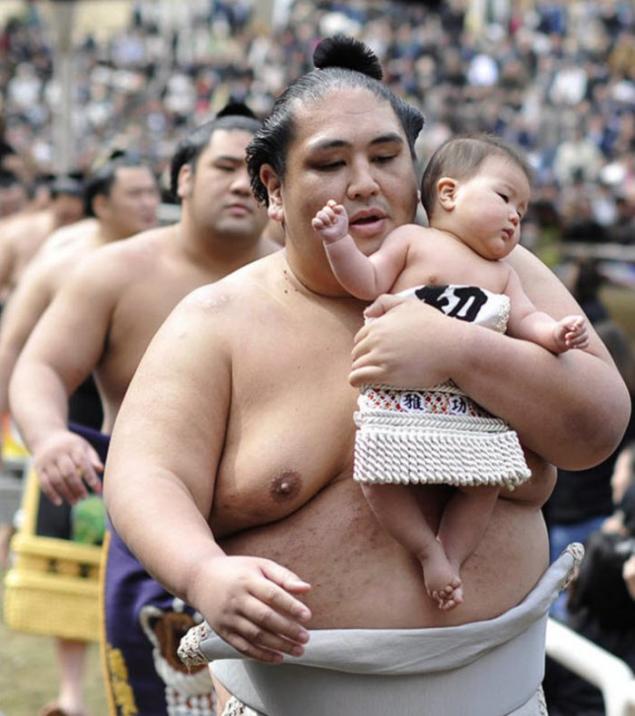
Sumo Miyabiyama carrying a child before the ceremonial tournament "Honozumo" at the Yasukuni Shrine in Tokyo. (EPA)
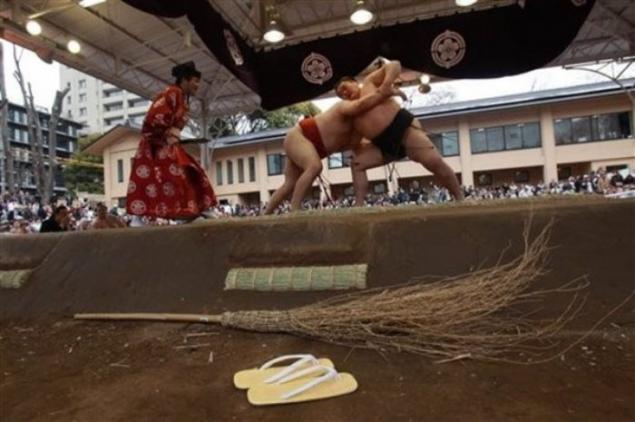
Area sumo wrestling is a square platform in 34 - 60 cm in height, called the dohyo. The fight takes place in a circle with a diameter of 4 meters 55, the boundaries of which are laid special braids of rice straw. (Reuters Pictures)

Doha Golf is made of rammed clay and topped with a thin layer of sand. The sand, which covers a clay dohyo, symbolizes purity. Sign in Doha for women, according to ancient tradition, has always strictly forbidden. (Reuters Pictures)
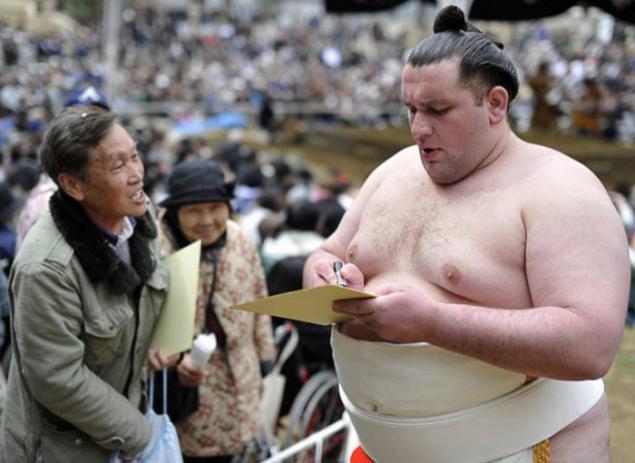
Georgian sumo wrestler Gagamaru autographs. (EPA)
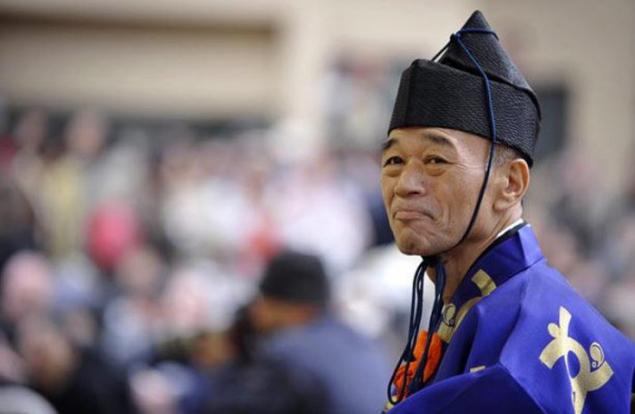
Judge (gёdzi), among other duties, serves as a Shinto priest. (Getty Images)
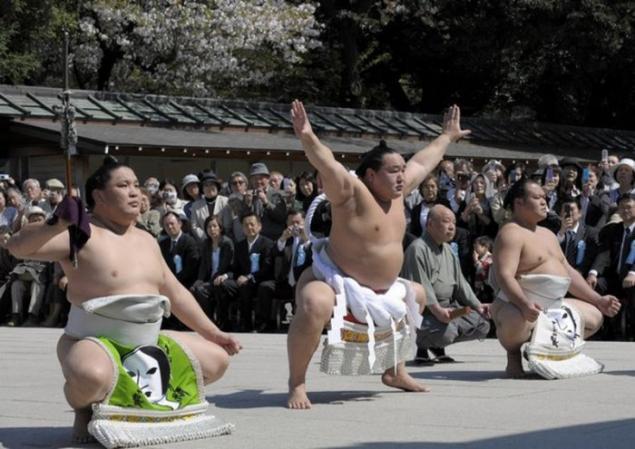
Mongolian sumo wrestler Yokozuna Asashoru (center) takes a ritual entrance into the ring before the start of the tournament at the demonstration to the Yasukuni Shrine in Tokyo on 7 April. Association dedicated one-day sumo tournament sumo Yasukuni Shrine, where hundreds of people can be free to enjoy the spectacle. (Getty Images)
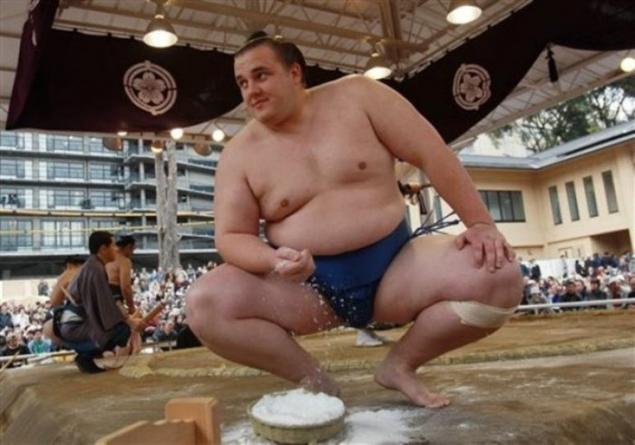
Estonian sumo wrestler Baruto waiting for the start of the tournament at the Yasukuni Shrine. Last month Baruto (real name - Kaido Huvelson) was erected in the second highest rank of ozeki, or champion, after a series of successful victories in recent tournaments. (AP)

In professional sumo no weight classes, so one of the determining factors is the weight of a wrestler. Almost all athletes except beginners weigh under 100 kg or more, and for the higher weight divisions above 120 kg de facto compulsory - otherwise you can not count on success. (Reuters Pictures)
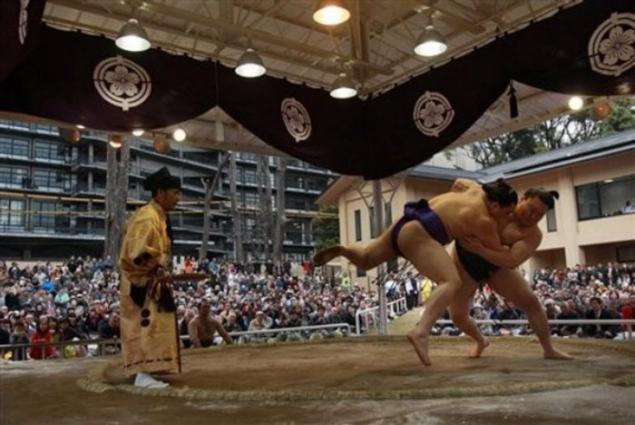
Two basic rules are used to determine the winner of each bout: 1) layeth the first to land any part of the body other than the feet is considered a loser; 2) layeth the first ground outside the circle is considered to be a loser. (AP)


Sumo wrestlers go to Yasukuni Shrine in Tokyo during the opening ceremony of the annual sumo tournament in Tokyo on April 9th. (Reuters Pictures)

Grand Champion sumo "yokozuna" Hakuho holds the son of a sumo wrestler Kotomitsuki called Aiki. (Reuters Pictures)

In the two top division wrestlers have special belt kesё-mawashi, which is used only in rituals. (Reuters Pictures)

In sumo it is forbidden to beat, but to the open palm, as well as the eyes and genital area. It is forbidden to grab the hair, ears, fingers and genitals closing of the mawashi. They should not be chokehold. Everything else is allowed, so the arsenal of fighters included slaps, pushes, grabs permitted for any part of the body and especially the belts and rolls, various steps and sweeps. (Reuters Pictures)

Sumo Miyabiyama carrying a child before the ceremonial tournament "Honozumo" at the Yasukuni Shrine in Tokyo. (EPA)

Area sumo wrestling is a square platform in 34 - 60 cm in height, called the dohyo. The fight takes place in a circle with a diameter of 4 meters 55, the boundaries of which are laid special braids of rice straw. (Reuters Pictures)

Doha Golf is made of rammed clay and topped with a thin layer of sand. The sand, which covers a clay dohyo, symbolizes purity. Sign in Doha for women, according to ancient tradition, has always strictly forbidden. (Reuters Pictures)

Georgian sumo wrestler Gagamaru autographs. (EPA)

Judge (gёdzi), among other duties, serves as a Shinto priest. (Getty Images)

Mongolian sumo wrestler Yokozuna Asashoru (center) takes a ritual entrance into the ring before the start of the tournament at the demonstration to the Yasukuni Shrine in Tokyo on 7 April. Association dedicated one-day sumo tournament sumo Yasukuni Shrine, where hundreds of people can be free to enjoy the spectacle. (Getty Images)

Estonian sumo wrestler Baruto waiting for the start of the tournament at the Yasukuni Shrine. Last month Baruto (real name - Kaido Huvelson) was erected in the second highest rank of ozeki, or champion, after a series of successful victories in recent tournaments. (AP)

In professional sumo no weight classes, so one of the determining factors is the weight of a wrestler. Almost all athletes except beginners weigh under 100 kg or more, and for the higher weight divisions above 120 kg de facto compulsory - otherwise you can not count on success. (Reuters Pictures)

Two basic rules are used to determine the winner of each bout: 1) layeth the first to land any part of the body other than the feet is considered a loser; 2) layeth the first ground outside the circle is considered to be a loser. (AP)
